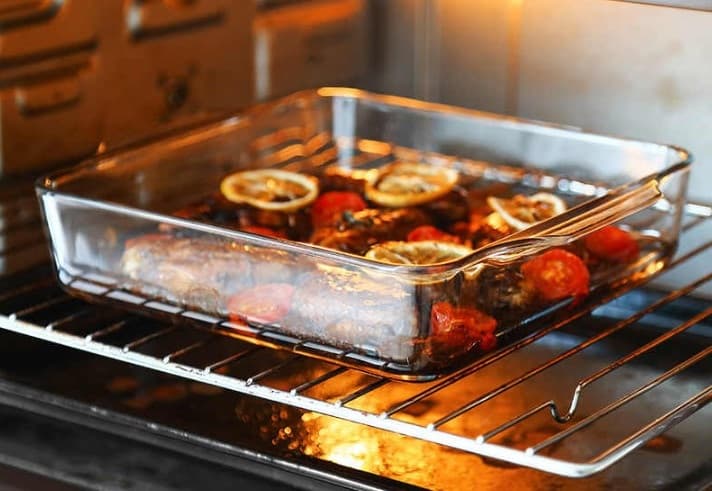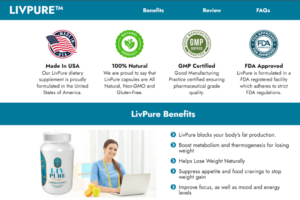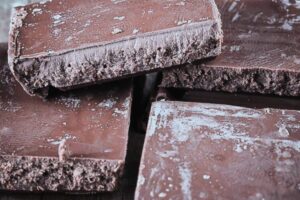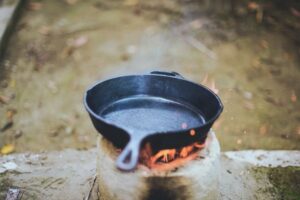Pyrex kitchen glassware is popular because it is durable and strong. But a question many people have is how well Pyrex holds up in the oven? Is Pyrex oven-safe?
Pyrex is oven-safe. The Pyrex Use & Care guidelines state that Pyrex glassware can be used for warming, cooking, baking, and reheating food in microwave ovens as well as preheated standard and convection ovens.
Pyrex dishes are safe to use at a temperature of 446°F. The maximum temperature Pyrex is designed to withstand is up to 914°F.
The main cause of Pyrex shattering in the oven is if the dish is moved straight from the fridge or freezer into the oven. So avoid sudden temperature changes when using your Pyrex. If your Pyrex is in the fridge or freezer, allow it to come to room temperature before you put it in the oven.
Also, never use Pyrex glassware on top of the oven, e.g., on ceramic or induction cooktops or burners. This causes uneven heating on the bottom of the Pyrex, which can cause the Pyrex to fracture.
Read on to learn more about Pyrex glassware and how to safely use it in the oven.
Is Pyrex Oven-Safe?
Pyrex is safe for the oven. The Pyrex Use & Care guidelines state that Pyrex glassware can be used for warming, cooking, baking, and reheating food in microwave ovens. Pyrex can also be used in preheated standard and convection ovens.
Pyrex is a kitchen glassware brand with remarkable heat capacity. In response to a customer’s question, the company’s consumer care department replied that the glassware has no maximum temperature so long as you preheat the oven before putting it inside.
The customer service staff followed his statement by saying that as long as the safety guidelines are followed, particularly the ones that come with the product, Pyrex can withstand 400°F. It can be used for warming, cooking, reheating, and baking food in preheated standard and convection ovens, including microwave ovens.
If you bought a regular Pyrex dish, it is designed only for kitchen use. It is not intended for commercial and industrial purposes–not even for camping. The plastic lid of the dish is for storage and microwave use only. They are also BPA-free.

How to Ensure Pyrex Won’t Shatter Inside the Oven
Pyrex dishes are oven-safe; however, you need to use caution when using them in the oven. If you are careful when using your Pyrex, there is no reason it will shatter inside the oven or on an open stove. Here are some ways you can ensure accidents won’t happen in your kitchen.
- Avoid sudden temperature changes when using your Pyrex. Instructions from the company forbid you from adding liquid to hot Pyrex, not to put it directly on the countertop, sink, or metal surface, not to put it on a cool or wet surface, and not to handle it with a damp cloth. These actions will expose the glassware to a sudden temperature change.
- Don’t use your Pyrex for cooking dishes that need high heat techniques.
- Avoid using your Pyrex cooking pan for cooking dry dishes.
- Don’t use Pyrex to reheat dry foods in the microwave.
- Avoid placing your hot Pyrex on top of the metal eyes of your open stove.
- Use a dry oven mitt or dry cloth to hold hot Pyrex glassware.
- Make sure that the cloth or oven mitt you are using to handle hot Pyrex is thoroughly dry. Wet fabric conducts heat. You don’t want to suffer burns because of holding hot glassware with wet gloves or cloth.
- Don’t use Pyrex to cook, broil, heat, or grill food on a stovetop or toaster oven. Pyrex is not designed for that purpose.
- Never expose hot Pyrex to cool liquids. If you need to cook food straight from the freezer, start by adding some liquid to the glassware. This technique will cause the frozen fluids from the food to thaw and get to room temperature. It will also prevent the frozen food from subjecting the glassware to sudden temperature changes.
- Be careful when using metal spoons in hot Pyrex. Let the hot glass cool down before using a metal spoon on it.
Preheat Your Oven First Before Putting in Pyrex
It seems that every package of Pyrex comes with a label that says ‘always preheat oven.’ Perhaps it is their subtle way of telling you how you can extend the life of your Pyrex. If you examine the process, you will understand why.
As the oven is preheating, its gas burner or heating element will be working at full power. In an electric oven, a huge amount of radiant heat is generated. Every object irradiated by the heat gets hot. However, the air temperature does not change.
Therefore, if you put Pyrex glassware inside a cold oven and turn it on, the radiating heat will make some parts of the glassware hot as the oven continues to heat up. However, the other remaining parts of the dish exposed to the air temperature inside (which is still cool) will remain cooler.
If you preheat the oven before putting in the Pyrex glassware, the radiant heat will make some of its parts hot. But this time, the duration will be shorter.
The air temperature inside the oven is also hotter. In short, the Pyrex’s exposure to the change in temperature will not be as significant as the temperature differential that it will experience in an oven that is not preheated.
Pyrex and Modern Ovens
Thankfully, many modern ovens have a preheating feature. Most of these newer machines have preheating buttons to make it easier for you not to forget. Ovens with this feature utilize the grill on the oven’s ceiling to heat the inside faster.
If Pyrex Shatters in the Oven
What will you do if Pyrex suddenly shatters inside the oven or even outside of it? As long as you follow the Pyrex safety instructions, you won’t experience this accident. But if the Pyrex does shatter or fracture in the oven, here is what you should do:
If Pyrex shatters or if you accidentally break it, pray that you are wearing shoes and oven mitts. In other words, you should be ready for anything that would happen when you are working with Pyrex glassware, particularly if you place it in a running oven.
Make sure that you are wearing shoes, thick safety gloves, and a pair of safety goggles. Do not attempt to repair the glassware. Carefully pick up the broken pieces of glasses with a tong or something similar. Collect the shards in a pan and then put them all in a suitable waste bag. Throw the bag carefully in the bin.
After cleaning the oven, stove, or floor, inspect the rest of the room for stray glass shards. They can get to places you don’t expect. Of course, you need to discard the food contained in the Pyrex. You don’t know if there are small bits of broken glasses embedded in it.

Pyrex Limitations
You may be wondering if Pyrex has any limitations. Yes, there are limitations to Pyrex glassware. You need to handle Pyrex with care, as you would any brand of glassware. Some of its limitations are as follows:
- Never forget to preheat the oven before putting in your Pyrex.
- Don’t heat almost empty or empty glass bowls and glass containers in the microwave. Never overheat butter or oil in the microwave. Use only the minimum temperature required.
- Don’t put a hot Pyrex dish directly on a cool or wet metal surface or a countertop. Put it first on a dry potholder or cloth, a cooling rack, or a wooden trivet.
- Don’t use Pyrex glassware on a stovetop with an electric burner or an open flame, a barbecue grill, a toaster oven, or broiler.
- Never use Pyrex to heat foods in brown paper bags or wrappers.
- Let Pyrex cool down at room temperature before placing it in the freezer or immersing it in water.
- Don’t use Pyrex to microwave popcorn.
- If you use Pyrex to cook food items that may release fluids, such as frozen foods, food juices, and fats, add a little water to cover the glassware’s bottom. Then place the Pyrex in the oven. This technique will prevent any sudden changes in temperature that may happen as the food releases fluids. If the dish is hot, don’t add liquid anymore. If you do, this may cause an abrupt temperature change and shatter the glassware.
To underline the need and if you want to enjoy the service of your Pyrex for a long time, follow the Safety & Usage instructions issued by the company.
What Is Pyrex Made Of?
Pyrex glassware produced before 1988 was made from different materials. That’s why you need to follow the manufacturer’s instructions on how to use the glassware.
While Pyrex says that the glassware is oven-safe, it cannot resist thermal shock. If you suddenly expose it from one extreme temperature to another, it could experience thermal shock and may shatter. So, you need to handle this glassware with care.
On average, Pyrex made before 1988 were remarkably heat resistant. They could be transferred from the fridge or freezer to the oven. Owners of this glassware back then have no worries about their glassware shattering because of the sudden change in temperature.
Somewhere along the line, the Pyrex glass changed to no longer be resistant to thermal shock. If you misuse it, it can shatter into tiny little pieces inside the oven. So, if you recently acquired your Pyrex, there are many things you need to know.
Corning Glassware Company originally made Pyrex glassware. This company developed a special glass in 1915 and branded it ‘Pyrex.’ In the beginning, they used borosilicate glass to make the glassware. This type of glass made Pyrex kitchenware thermal shock resistant. But that was only until or up to 1998.
The name Pyrex was taken from the components of the special glass that the company developed. The major component of that glass is borosilicate. In 1998, Corning sold its Pyrex brand to World Kitchen, LLC.
According to Consumer Reports, instead of using borosilicate glass, the acquiring company started using soda-lime glass, which is just ordinary glass. Thus, Pyrex made before 1998 can handle extreme temperatures because it was made of borosilicate glass. You can take it out from the fridge and immediately put it inside a hot oven.
Pyrex is now making its glassware out of soda-lime glass. This type of glass material is cheaper than borosilicate glass. When asked what Pyrex is made of, the staff at the company’s customer service said their storage dishes are made from soda-lime glass – the same glass that Pyrex has been using since 1945.
Conclusion – Is Pyrex Oven-Safe?
Pyrex dishes are oven-safe. It is suitable for regular use at a temperature of 446°F. It can also handle a maximum temperature of 914°F.
The company’s Use & Care guidelines state that Pyrex glassware can be used for warming, cooking, baking, and reheating food in preheated standard and convection ovens, including microwave ovens.
The main cause of Pyrex shattering in the oven is if the dish is moved straight from the cold freezer or fridge into the oven. So avoid sudden temperature changes of your Pyrex. If your Pyrex is in the freezer or fridge, allow it to come to room temperature before you put it in the oven.
Read next:






